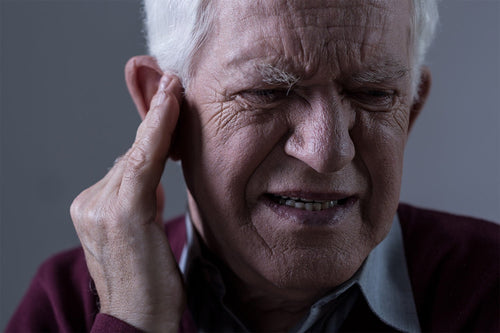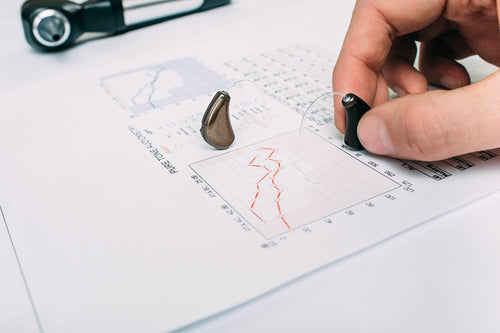Hearing aids are an integral aspect of many people’s days around the globe. Needing hearing aids and relying on them for you to be able to hear is a large task. Making sure that they are reliable and always working is important.
Hearing aids such as the Audien Atom are so small that once they are in, many people completely forget that they are wearing them. They simply enjoy having their hearing. While this is beneficial, it can make for an increased chance of forgetting that they are in when you are bathing, going to the beach, or taking a quick dip in the pool.
These accidents happen, and knowing what to do when your hearing aids get wet could potentially save you from having to buy another set.
Below is a comprehensive guide of the steps you should take if your hearing aids become submerged or wet. While these steps won’t guarantee that they will still work, they will provide the best chances of it recovering from a water incident.
Steps To Take When Your Hearing Aids Get Wet
It is common knowledge that electronics and water typically do not mix well. The main reason for this is that water is able to conduct electricity and bridge connections across the motherboard that shorts it out. In addition, moisture has the ability to potentially impact the batteries in consumer electronics.
Many hearing aids have some degree of water resistance to protect against moisture from the ear or sweat, but many people confuse this with waterproof. The difference between waterproof and water-resistant hearing aids is that water-resistant hearing aids have the ability to fail when exposed to excessive amounts of water.
The best step to take when your hearing aids get excessively wet is to try and remove as much water as quickly as possible and allow it to sit. Below is a step-by-step guide to help you do this effectively.
1. Turn Them Off
The very first thing you should do when your hearing aids get submerged or excessively wet is to turn them off. Most hearing aids have some kind of physical switch to turn them off to save battery, but this is a crucial step.
Turning the device off opens the inner circuit of the hearing aids. This stops the flow of electricity throughout the hearing aid. With no electricity flowing, it helps to eliminate the potential for water shorting the electronics.
2. Remove Batteries If Possible
Depending on your specific model of hearing aid, you may be able to remove the batteries. Removing the batteries is another great step to take to ensure electricity stops flowing through the hearing aid and that your batteries do not corrode from standing water.
If you have a rechargeable unit such as the Atom, EV3, or EV1, then you will be unable to readily remove the battery unit. If this is the case, go ahead and skip this step and proceed to step three.
3. Dry Them Off As Much As Possible
This step may seem blatantly obvious and your first inclination, but it is important to ensure that the device is completely off first. When drying your device, you may want to remove the ear tips to reach the inner opening of the hearing aid.
You can also utilize a dry cotton swab to help dry difficult-to-reach places. You can also gently try and shake out any trapped water. If you can’t get it all, don’t worry. The next step will help remove any excess water.
4. Use a Desiccant
The next step will completely dry out the internals of the hearing aid. With all of the easily accessible water removed, you should place the hearing aids into a bag full of a desiccant. Desiccants are materials that absorb nearby moisture and can effectively be utilized to remove the remaining water from the hearing aid.
The best option would be to place them in an airtight bag with some silica gel packets, but these may not be readily available at a moment’s notice. One option that many people have in their cupboards is some rice. Simply take uncooked rice and your hearing aids and leave them in a plastic bag or bowl overnight.
This method is not exclusive to hearing aids and can be a great technique to utilize with other electronics that have incidentally gotten wet.
5. Turn Them on and Test Them Out
The final step is the moment of truth to see if your efforts were successful in reviving your hearing aids. For hearing aids with removable batteries, pick up some fresh batteries and reinstall them before trying to turn them on.
If you are lucky enough for them to power on, you should try to utilize the different functions, such as adjusting the volume to ensure it has retained all of its normal functioning. And like that, you have hopefully saved yourself from needing to buy another set of hearing aids.
What To Do If They Stop Working

If you have gone through the steps above and you are unfortunate enough to have a pair of dead hearing aids on your hands, you will have to shop around for some new ones. While this can be a hassle, you can look at the bright side and think of it as a time to get yourself a much-needed upgrade.
Hearing aids are continually getting better, smaller, and more portable, and utilizing this incident as a chance to get something better can lessen the inconvenience and bring something good out of a bad situation.
The Audien Atom Pro is an excellent choice to upgrade to. With a small form factor, portable recharging case, and enhanced feedback cancellation, you can hear even better than before. Pair this with Audien’s 30-day money-back guarantee, and you can make sure you love them or your money back.
Ways To Avoid This Situation
While after one time of making a mistake, you are likely to not repeat it, sometimes we could all use help in ways to avoid it from happening again.
Below is a closer look at some preventative measures you can take to avoid the situation nowhere your hearing aids become damaged. Then, review what to do in case you need to buy a new set.
Set Reminders
One method to help you remember to take your hearing aids out before you bathe or go for a swim is to create alerts on your smartphone to remind you to take them out. Let’s say you go for a swim every Tuesday evening. You could easily set a reminder on your phone to remind you to take them out, saving you from an incidental submersion of your hearing aids.
Get a Protection Policy
Accidents happen. One of the best ways to account for them is to plan ahead and get some level of insurance on your hearing aids.
Hearing aids can be seen as an investment in your overall well-being, and being without them for an extended period of time can be difficult. To protect your investment, you can purchase a protection policy. Such a policy will help you more effectively get replacements at a reduced cost.
Audien Hearing’s lifetime protection policy is an ideal way to protect your investment and be prepared no matter what happens. The plan can be of great use in the case of water damage, breakage, malfunction, and even if they are lost. The policy allows you to pay a reduced rate and get a complete replacement for your specific hearing aid.
At $4 a month, the plan is very accessible for any budget and can be just what you need if you are accident prone or just looking for a little more reassurance. With a protection plan, you can rest easy knowing that if your hearing aids get wet, you will have the ability to quickly and easily get a replacement set.
Protection in Place
In summary, getting your hearing aids wet can be gut-wrenching, but there are steps you can take to potentially salvage them and get them working. At its most basic, the hearing aids should be completely powered off as soon as possible and then left to dry. Once entirely dry, you can turn them back on and see if they still work.
While sticking them in a bag of rice may not work, one way to gain some reassurance is to purchase some kind of protection plan that includes water damage.
At Audien, we offer a reasonable $4 a month policy that can protect against water damage, loss, and general damage. At the price of a cup of coffee a month, you could have the assurance that you will never need to worry about going without your hearing aids and ability to hear.
Sources
Conductivity (Electrical Conductance) and Water | US Geological Survey













